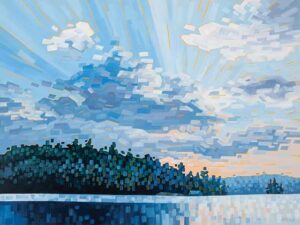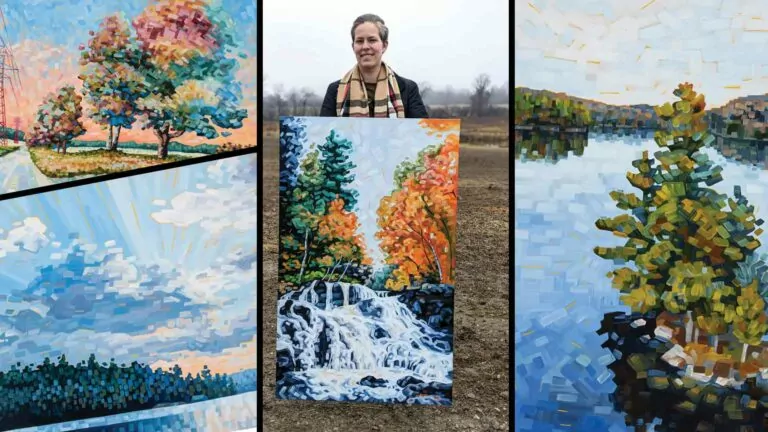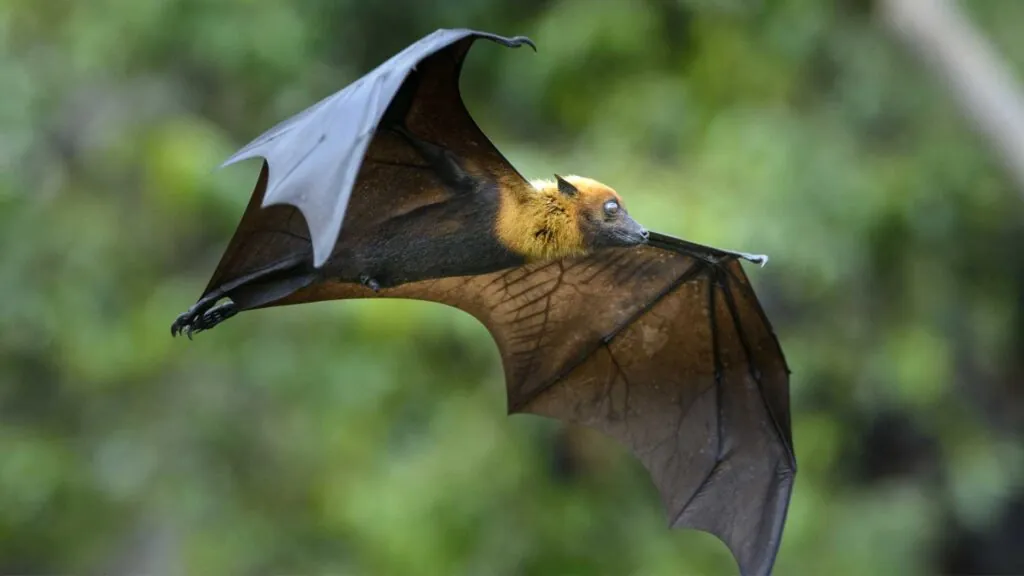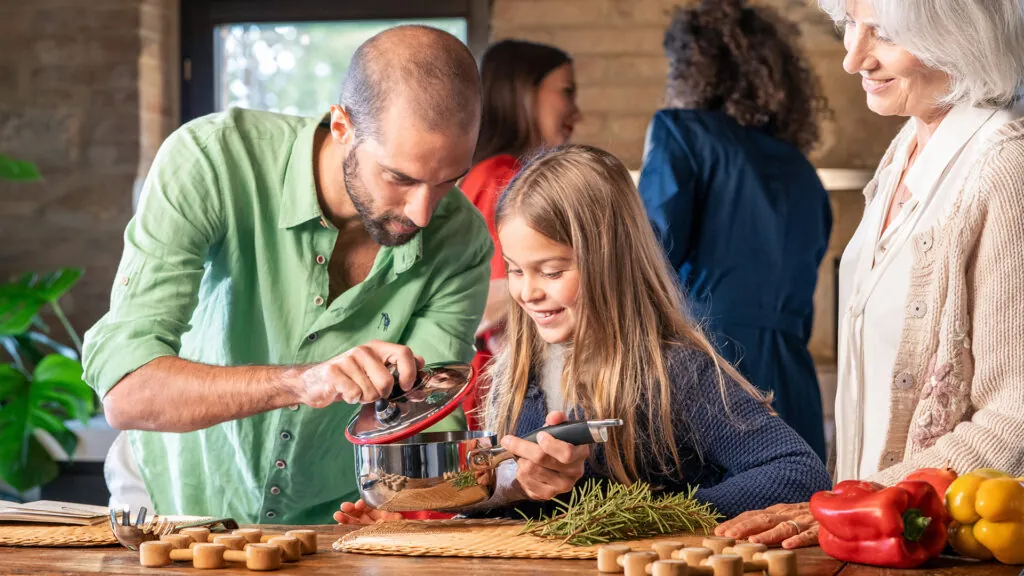
Ahmic Lake Island II
30×40”
“This painting features a bird’s eye view of the island just outside of Bells Bay on Ahmic Lake in Magnetawan, ON. This particular island finds itself in many of my lake paintings. The walleye fishing near this island is pretty good too.”
Thank you, dear readers, for all your suggestions of artists to profile in this column. One name that has been shared repeatedly with me is Simone Bos – a landscape painter from Cambridge, Ontario.
Simone Bos has been painting seriously since 2017 and has been showing her artwork in local galleries since 2019. She currently works full-time as an artist, a dream she has had for over a decade. Simone admits that making her dream a reality has also meant accepting certain challenges. Working as a full-time artist involves long hours, significant risks and learning new skills required to successfully operate a business. All this “pushes me out of my comfort zone,” says Simone, “but I am growing and learning!”
Simone is also grateful for the meaningful help she’s received along the way. Simone’s parents recently gifted her space in an extra garage which she transformed into a beautiful artist studio complete with plenty of natural light. Her new garage-studio is now used as a workspace, a showroom for her artwork and, at times, a classroom.
Like many other Canadian artists, including some of those profiled in this column, Simone has been influenced by the Group of Seven and finds her inspiration in the wild Canadian landscape. She is particularly drawn to scenes in and around Ahmic Lake in Magnetawan, Ontario, as well as the local fields, farms, and country roads near her home in rural Cambridge, Ontario. “I paint places I know/love, which helps me to pull the feeling of the place from the photograph references I work from.”
Simone uses “layered cubes of color” to evoke emotion. She explains: “the intentional use of brushstrokes as cubes and shapes gives rhythm and interest to the paintings, and allows for a calming, art-making experience.”
Simone follows a rather structured process expressing her understanding of the “Master Artist’s” love for beauty and order.
“The finished paintings capture the essence of the landscape featured in a unique, energetic, and yet orderly way. I believe that the viewers who connect with my artwork see this and the sense of calm that comes with experiencing a beautiful scene in nature is evoked also.”

How Majestic
30×40”
“The sunsets on Ahmic Lake are always spectacular, but this one was particularly dramatic. A peaceful lake, with heavy clouds scattering the final sun rays. As the song of the same name by Citizens & Saints recognizes, ‘how majestic is Your (God’s) name in all the earth.’”
Simone has also been exploring art on a deeper level – understanding the structure and source of beauty and asking what it means to “engage with God in a meaningful way through [my work].” A verse from Ecclesiastes is of particular interest to her.
“He has made everything beautiful in its time. Also, he has put eternity into man’s heart, yet so that he cannot find out what God has done from the beginning to the end.” (Ecc. 3:11)
Simone believes that all beauty is from God and wants to encourage viewers of her work to reflect on this too.
“The more I paint, the more my observational skills grow. I am able to notice more and more beauty in the natural world around me, which points back to a detail oriented, creative God. I am also learning to trust that God is the Lord of my business and has full control over it: over my sales, my opportunities, my successes, and failures. He is teaching me to trust Him.”
You can see more of Simone’s beautiful work and connect with the artist on her website SimsArtStudio.com, and you can follow Simone at Instagram.com/SimsArtStudio and Facebook.com/SimsArtStudio.
If you have a suggestion for an artist you’d like to see profiled in RP please email Jason Bouwman at [email protected]. In the picture above, Simone is displaying “Beauty Untamed” which she details is: “Old Man’s River Falls is a beautiful waterfall in Magnetawan, ON, near Ahmic Lake. In Autumn this scene is particularly spectacular, with white water rushing over black rocks, all framed by orange maples. I could sit and stare at this view for hours!












